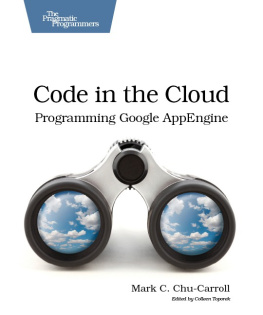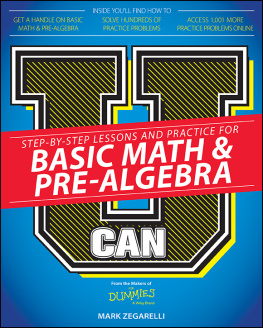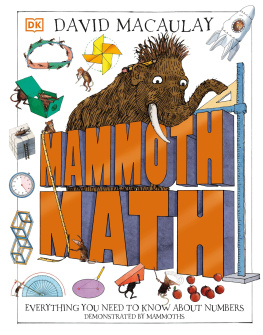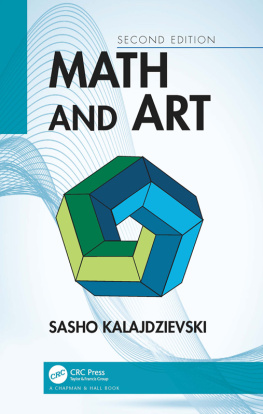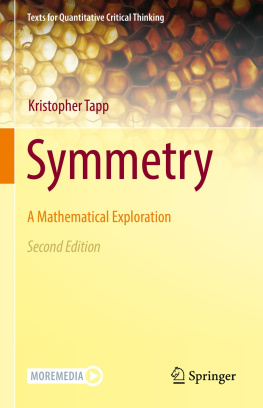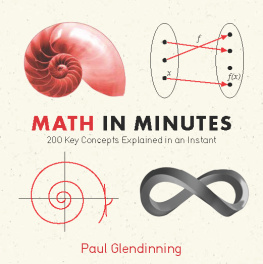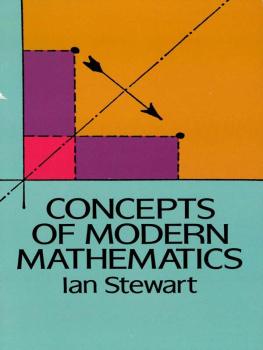Good Math
A Geeks Guide to the Beauty of Numbers, Logic, and Computation
by Mark C. Chu-Carroll
Version: P1.0 (July 2013)
Copyright 2013 The Pragmatic Programmers, LLC. This book is licensed tothe individual who purchased it. We don't copy-protect itbecause that would limit your ability to use it for yourown purposes. Please don't break this trustyou can use this across all of your devices but please do not share this copywith other members of your team, with friends, or via file sharing services. Thanks.
Dave & Andy.
Many of the designations used by manufacturers and sellers to distinguish their products are claimed as trademarks. Where those designations appear in this book, and The Pragmatic Programmers, LLC was aware of a trademark claim, the designations have been printed in initial capital letters or in all capitals. The Pragmatic Starter Kit, The Pragmatic Programmer, Pragmatic Programming, Pragmatic Bookshelf and the linking g device are trademarks of The Pragmatic Programmers, LLC.
Every precaution was taken in the preparation of this book. However, the publisher assumes no responsibility for errors or omissions, or for damages that may result from the use of information (including program listings) contained herein.
Our Pragmatic courses, workshops, and other products can help you and your team create better software and have more fun. For more information, as well as the latest Pragmatic titles, please visit us at http://pragprog.com.
This book is dedicated to the memory of my father, Irving Carroll ( zt"l ). He set me on the road to becoming a math geek, which is why this book exists. More importantly, he showed me, by example, how to be a mensch: by living honestly, with compassion, humor, integrity, and hard work.
Table of Contents
Copyright 2013, The Pragmatic Bookshelf.
Early praise for Good Math
Mark Chu-Carroll is one of the premiere math bloggers in the world, able to guide readers through complicated concepts with delightful casualness. In Good Math he brings that same skill to a book-length journey through math, from the basic notion of numbers through recent developments in computer programming. If you have ever been curious about the golden ratio or Turing machines or why pi never runs out of numbers, this is the book for you.
| Carl Zimmer |
| author of Matter, a weekly column about science in The New York Times ( http://bit.ly/NYTZimmer ); and The Loom, a National Geographic Magazine blog ( http://phenomena.nationalgeographic.com/blog/the-loom ) |
Fans of Mark Chu-Carrolls lively and informative blog, Good Math/Bad Math, will find much to savor in this mathematical guide for the geekerati. Chu-Carroll covers it all, from the basics of natural, irrational, and imaginary numbers and the golden ratio to Cantor sets, group theory, logic, proofs, programming, and Turing machines. His love for his subject shines through every page. Hell help you love it, too.
| Jennifer Ouellette |
| author of The Calculus Diaries |
Preface
Whered This Book Come From?
Growing up, some of my earliest memories of my father involve math. My dad was a physicist who worked for RCA doing semiconductor manufacturing, so his job involved a lot of math. Sometimes hed come home with some unfinished work to do over the weekend. Hed be sitting in the living room of our house, with a scattering of papers around him and his trusty slide rule by his side.
Being a geeky kid, I thought the stuff he was doing looked cool, and Id ask him about it. When I did, he always stopped what he was doing and explained it to me. He was a fantastic teacher, and I learned so much about math from him. He taught me the basics of bell curves, standard deviations, and linear regression when I was in third grade! Until I got to college, I never actually learned anything in math class at school because my dad had always taught it to me long before we got to it in the classroom.
He did much more than just explain things to me. He taught me how to teach. He always told me that until you could explain something to someone else, you didnt really understand it yourself. So hed make me explain things back to him as though he didnt know them.
Those times with my dad were the foundation of my love of math, a love thats lasted through the decades.
Back in 2006 or so, I started reading science blogs. I thought that these blog things were really fascinating and really exciting. But I didnt think that I had anything to say that would interest anyone else. So I just read what others wrote, and sometimes I commented.
And then one day I was reading a blog called Respectful Insolence , written under the pseudonym Orac, by a guy who was a professional cancer surgeon. He was talking about a paper written by a couple of crackpots who had drawn ridiculous conclusions from data published in a public database. Orac dismantled their arguments meticulously, explaining why the authors claims about basic medicine and biology were ridiculous. But in reading the original paper, what struck me was that refuting the authors misunderstanding of biology was unnecessary; their entire argument turned on interpreting graph data in a way that was completely bogus. Thats when I realized that while tons of biologists, doctors, neurologists, physiologists, and physicists were blogging about their specialties, no one was blogging about math!
So I went to Blogger and created a blog. I wrote up my critique of the sloppy math in the paper and sent a link to Orac. I figured that Id probably get a couple of dozen people to read it and that Id probably give up on it after a couple of weeks.
But once Id published that first post on my new blog, I thought about my dad. He was the kind of guy who wouldnt approve of spending time making fun of people. Doing that once in a while was fine, but making an entire hobby out of it? Not something hed be proud of.
Remembering how he taught me, I started writing about the kind of math I loved, trying to help other people see why it was so beautiful, so fun, and so fascinating. The result was my blog, Good Math/Bad Math . Its been almost seven years since I started writing it, and my posts now number in the thousands!
When I started my blog, I thought that no one would be interested in what I had to say. I thought that Id probably be read by a couple dozen people, and Id give up in disgust after a couple of weeks. Instead, years later, Ive acquired thousands of fans who read every post I write.
This book is my way of reaching out to a wider audience. Math is fun and beautiful and fascinating. I want to share that fun, beauty, and fascination with you. In this book, youll find the fruits of the time my dad spent with me, teaching me to love math and teaching me to teach it to others.
I still have his slide rule. Its one of my most prized possessions.
Who This Book Is For
If youre interested in math, this book is for you! Ive tried to write it so that its accessible to anyone with a basic high-school background in math. The more background you have, the more depth youll notice, but even if youve only taken high-school algebra, you should be able to follow along.
How to Read This Book
This isnt a book that you need to read cover-to-cover. Each chapter is mostly stand-alone. You can pick topics that interest you and read them in any order. Within the six parts of the book, chapters will often refer back to previous chapters in the same part for details. Youll get more out of those chapters if you read the referenced sections, but if you dont feel like it, you should still be able to follow along.


